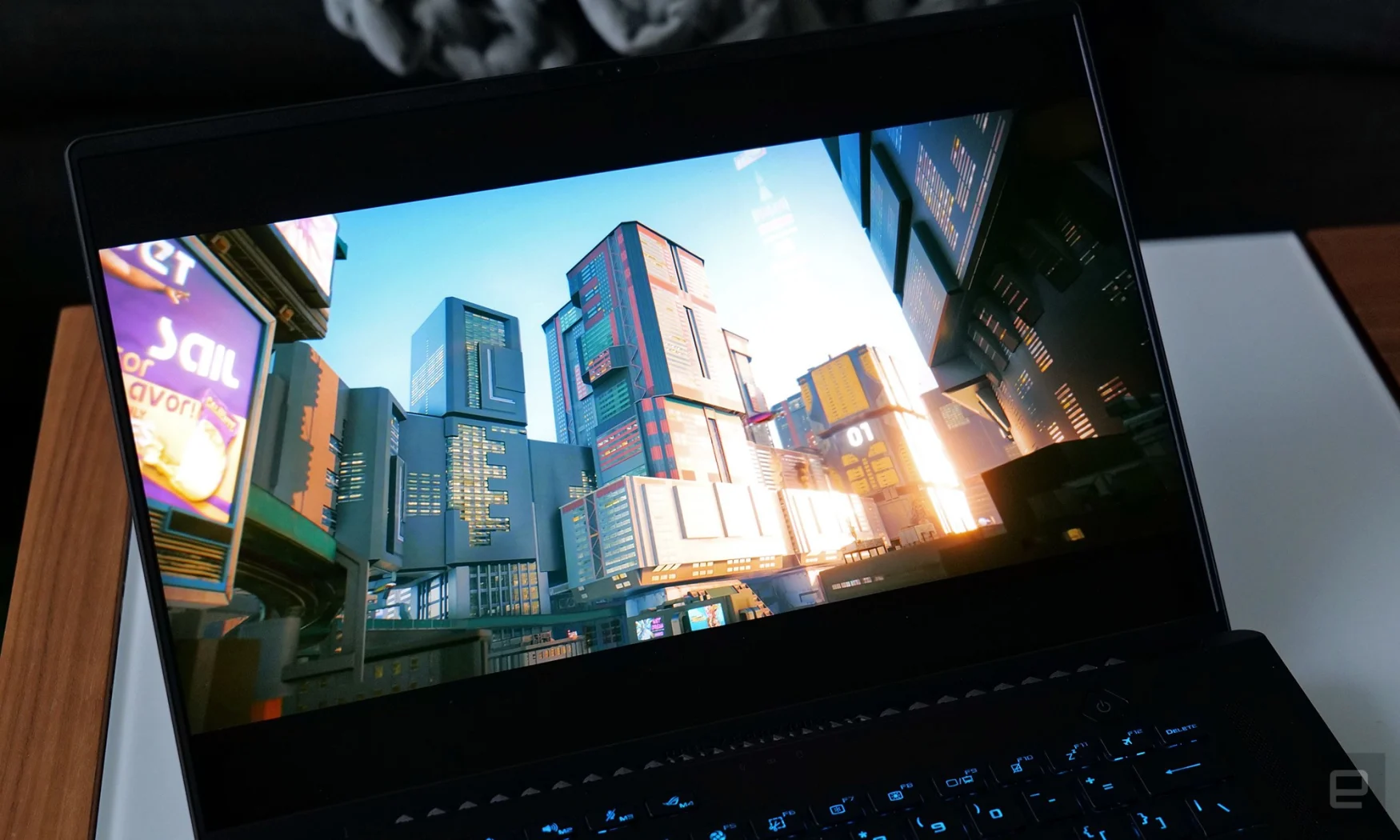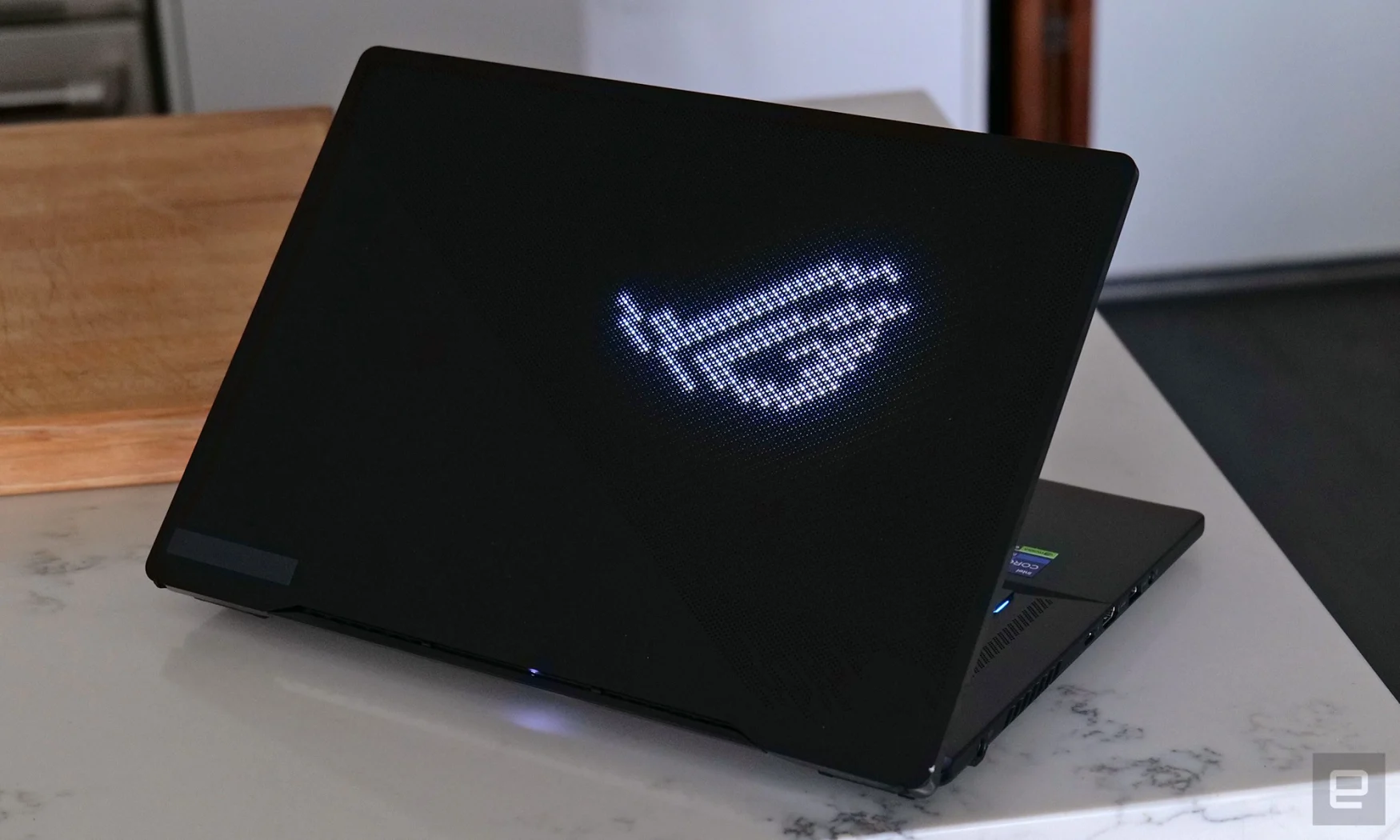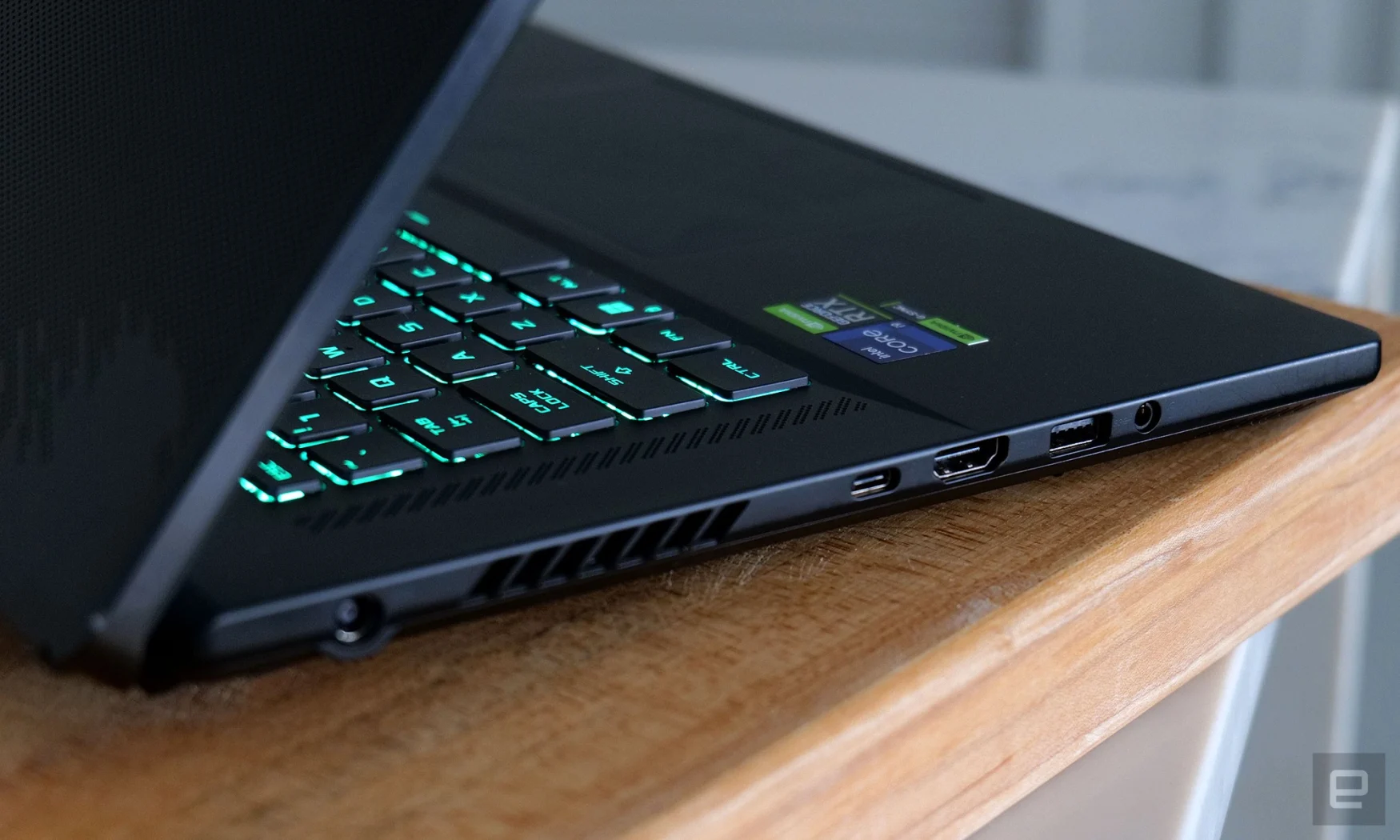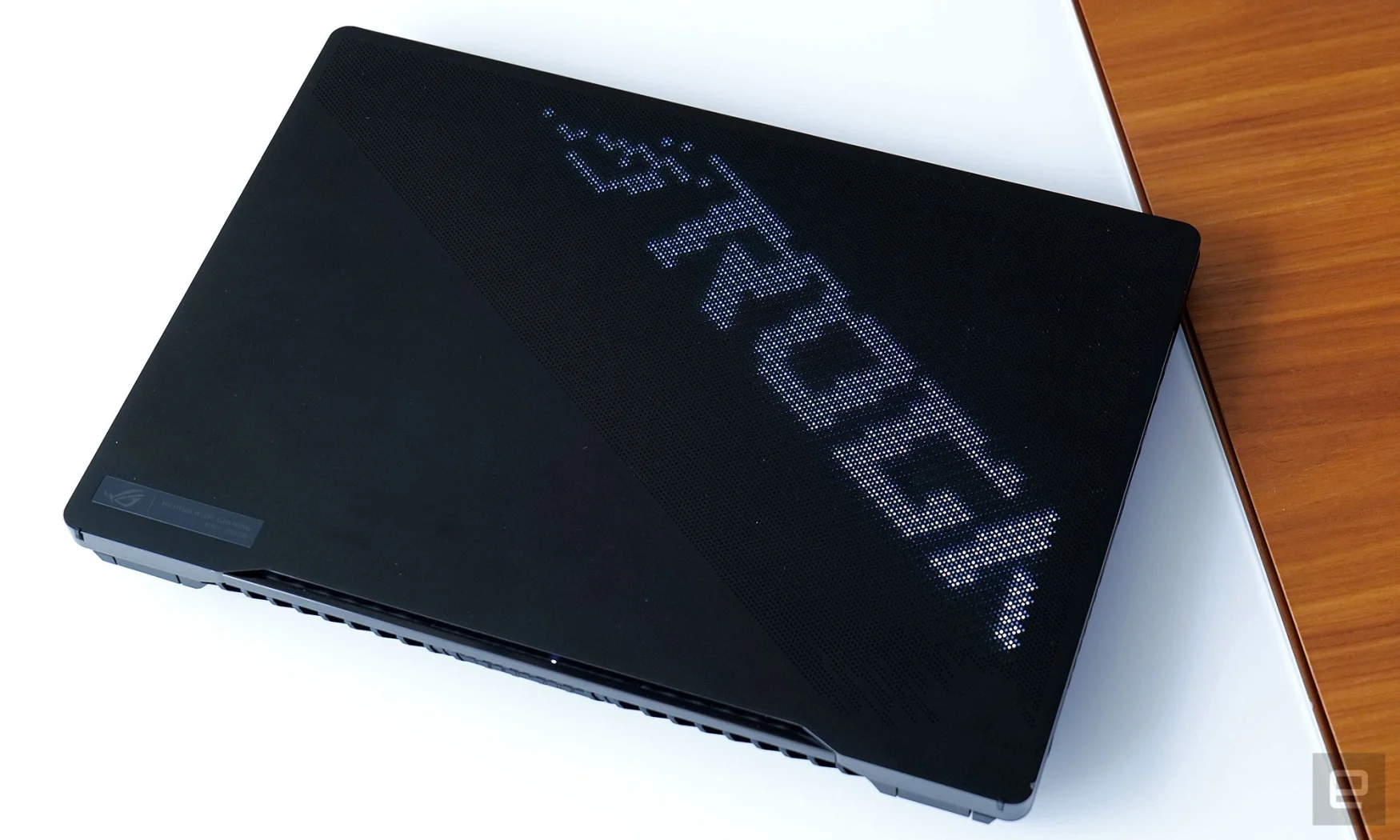Asus ROG Zephyrus M16 review: Big performance with a brilliant display | Engadget
Now that systems with NVIDIA’s 40-series mobile GPUs are finally hitting the market, there’s a fresh generation of gaming laptops promising even more bombastic performance. And with the 2023 version of ASUS’ ROG Zephyrus M16 packing a 13th-gen Intel CPU and an RTX 4090, we should be in for unmatched gaming prowess. This year, ASUS also upgraded the laptop’s display to a stunning new Mini LED panel, and by bringing over the AniMe Matrix lid, the notebook looks better too despite the rest of its chassis being largely unchanged. But the big question is that with our fully loaded review unit costing a whopping $3,500, is this system really delivering the same value back?
Mục Lục
Design
Featuring a relatively slim matte black chassis that weighs just over five pounds, the Zephyrus M16 does a great job at retaining a bit of portability alongside all that performance. And while it looks almost exactly the same as last year’s model, the AniMe Matrix LED lid (which we first saw on the Zephyrus G14 line) adds a bit of extra style without screaming about your power level. That’s because when you prefer to be more discreet, you can easily turn off the lights using ASUS’s Armoury Crate app and then just flip them back on when you want to surprise some nosy Saiyans.
ASUS
ASUS ROG Zephyrus 16M (2023)
SCORE
86
Engadget
86
Critics – Not yet scored
N/A
Users – Not yet scored
N/A
Pros
- New 240Hz Mini LED display
- Anime Matrix lighting
- Strong performance
- Slick design
Cons
- Very expensive
- Runs hot
- Loud fans
- Just OK battery life
Inside, the Zephyrus features RGB backlit keys and stereo speakers on the left and right. Typing feels good, though I wish the actuation felt a tiny bit stiffer, and it would have been nice if the deck was a little better at resisting fingerprints. I would have also liked to see a finger scanner integrated into the power button. It’s a feature widely available on non-gaming laptops, including those from ASUS, but for some reason, manufacturers think gamers don’t care as much about the convenience and security a built-in sensor provides.
And when it comes to connectivity, the M16 has plenty of ports including multiple USB jacks (both Type-A and Type-C), a full-size HDMI socket and even a microSD card slot. The one port ASUS didn’t keep from last year’s model is an Ethernet jack, which might be a deal breaker for some, but in 2023, I’m not that bothered.

Subscribe to the Engadget Deals Newsletter
Great deals on consumer electronics delivered straight to your inbox, curated by Engadget’s editorial team. See latest

Please enter a valid email address
Please select a newsletter
By subscribing, you are agreeing to Engadget’s Terms and Privacy Policy.
Display

Photo by Sam Rutherford/Engadget
As for visuals, the M16’s 2560 x 1600 screen is arguably a more important upgrade than its new CPU and GPU. Not only has the refresh rate been bumped up to 240Hz, because it’s a Mini LED panel, you also get way more dimming zones which help cut down on blooming. Its brightness is way better too. In normal use, the display tops out at around 600 nits, but thanks to its VESA DisplayHDR 1000 certification, things look even better when you’re playing games or watching movies. It’s an absolute treat.
My one gripe, and this is something that applies to all laptops with Nvidia’s Optimus tech, is that when switching between integrated graphics and the discrete GPU, the screen flashes and blacks out, which is just kind of clunky. On top of that, depending on your specific settings, when it changes modes you may need to reenable things like HDR or specific color profiles. This can get kind of tedious after a while, especially if you have Optimus set to switch automatically depending on if you’re plugged in or running on battery. So in the end, I set it to stay connected to the GPU all the time and never touched it again.
Performance and thermals

Photo by Sam Rutherford/Engadget
While the M16’s performance is anything but slow, ASUS stopped just short of delivering truly top-notch performance. That’s because instead of an HX-series chip, you get a slightly slower Intel Core i9-13900H CPU. Meanwhile, ASUS limits the RTX 4090 in the M16 to 145 watts (or 150 watts according to the NVIDIA control panel), which is less than the 175-watt cards you get in some competitors like the Razer Blade 16.
Granted, this may feel a bit nitpicky because it’s not like the M16 is sluggish, particularly when you factor in its 32GB of RAM and speedy 2TB SSD. But when you’re spending this much on a laptop, it’s weird to see ASUS leave a little bit of extra performance on the table. In PCMark 10, the M16 posted a score of 8,624, which is more than 20 percent higher than what we got from last year’s Razer Blade 15 (i7-12800H/RTX 3080 Ti). That’s a pretty significant jump, though we’re still waiting for a wider range of systems to arrive so we can get a more thorough comparison for 2023.

Photo by Sam Rutherford/Engadget
But more importantly, the M16 solidly beat the Blade 15 in games like Shadow of the Tomb Raider when it hit 144 fps at 1920 x 1080 on highest settings compared to just 124 fps for the Razer. Additionally, in Metro Exodus the M16 exhibited a similar lead when it hit 101 fps on Ultra at full HD versus 86 for the Blade 15. Furthermore, if you want to enjoy the Zephyrus’ native 2560 x 1600 resolution, the laptop has more than enough oomph to maintain a rock solid 120 fps with all the graphical bells and whistles turned on in Far Cry 6.
One downside of putting all this power in a relatively thin chassis (0.9 inches) though is that this thing runs hot. Temps don’t go into the danger zone, but you’re definitely not going to want to be doing any gaming on your lap, even casual titles. Heck, just resting your hands on the deck can make them sweaty after 10 or 15 minutes. Furthermore, the M16’s fans are pretty loud, and in performance mode, there’s simply no ignoring them. Thankfully, ASUS also gave the Zephyrus some rather beefy speakers so it’s pretty easy to drown out the fans, that is if you don’t mind making a ruckus for anyone else in the room (or possibly the next room over). And if you’re OK with a bit of reduced performance, there’s also a silent performance mode in the Armoury Crate app when you want to be less rambunctious.
Battery Life

Photo by Sam Rutherford/Engadget
The other con with a system this brawny is very mediocre battery life. When using the less power-hungry integrated graphics (which is what the system defaults to when Nvidia’s Optimus tech is set to automatic), the M16 lasted just 5:18 on our local video rundown test. That’s a bit better than something like the MSI’s Stealth 15m’s time of 4:15, but slightly worse than the 2022 Blade 15’s mark of 5:42. And to little surprise, things are even worse when you rely entirely on the discrete GPU, with the M16 conking out after less than three hours (2:50).
Wrap-up
All told, while it doesn’t look much different from last year’s system and its battery life is far from ideal, there’s a lot to like about the Zephryus M16 too. It’s got a slick and surprisingly understated design with a bit of hidden flash, and its new 240Hz Mini LED display looks awesome. It also has plenty of ports and, in a very welcome upgrade to general quality of life, ASUS even increased the resolution of its webcam to full HD. With the system supporting a 13th-gen Core i9 chip and up to RTX 4090 GPUs, practically anything you do runs super smooth. I just wish ASUS hadn’t stopped short of including the most beastly versions of Intel and NVIDIA’s top-specced mobile silicon. When you’re already paying $3,500 for a fully loaded model, you might as well toss a couple hundred more to ensure there aren’t any compromises on performance.

Photo by Sam Rutherford/Engadget
That said, for my money, I’d rather go with one of the M16’s more affordable configs, which starts at $1,950 for an i9 chip and an RTX 4070 card. You still get that brilliant Mini LED screen and AniMe Matrix lid along with 16GB of RAM and a 1TB SSD. This way you’ll have a system that won’t bust your budget or make your back sore if you decide to carry it around, without putting a damper on your ability to game in style either.
ASUS
ASUS ROG Zephyrus M16
For those who need big performance in a gaming laptop that’s still kind of portable, the 2023 ASUS ROG Zephyrus M16 packs a range of updated Intel CPUs and NVIDIA GPUs along with a brilliant new Mini LED display.
$3,499 at ASUS






